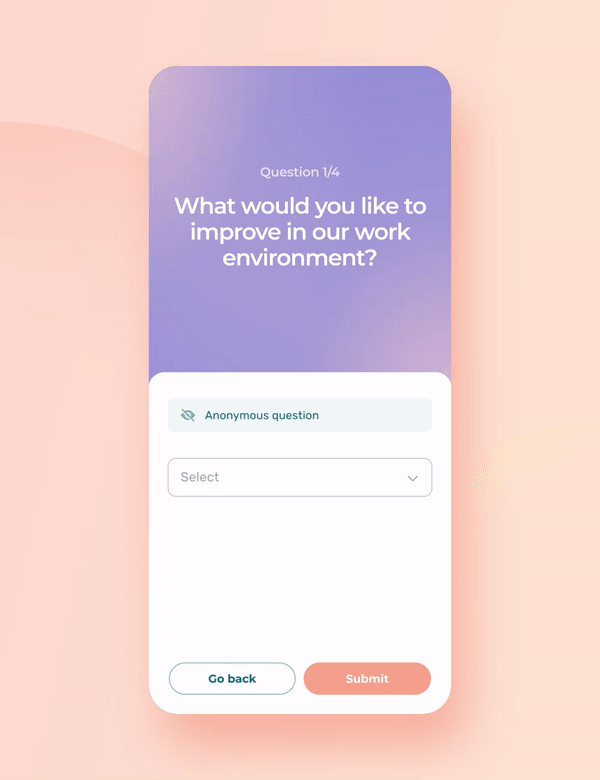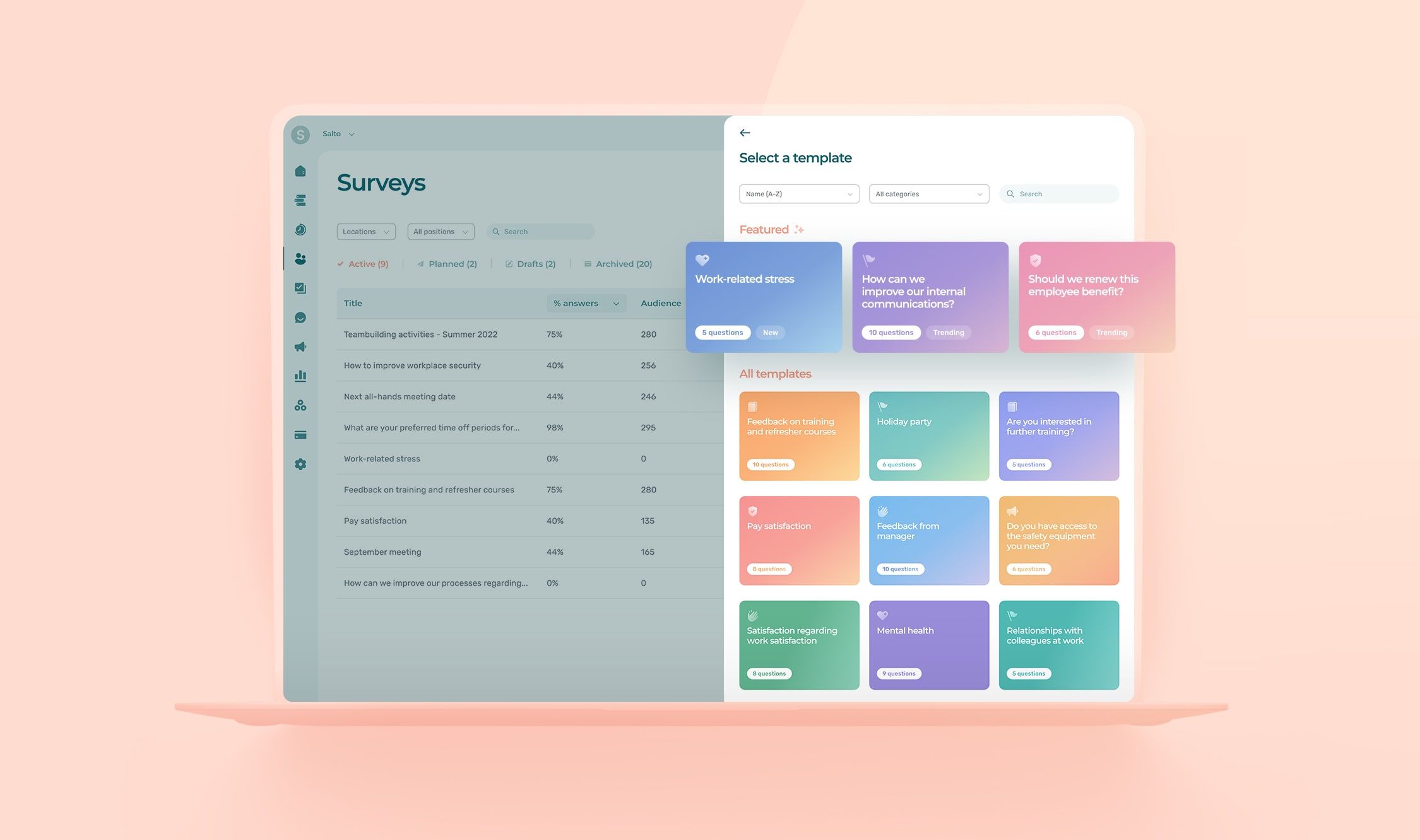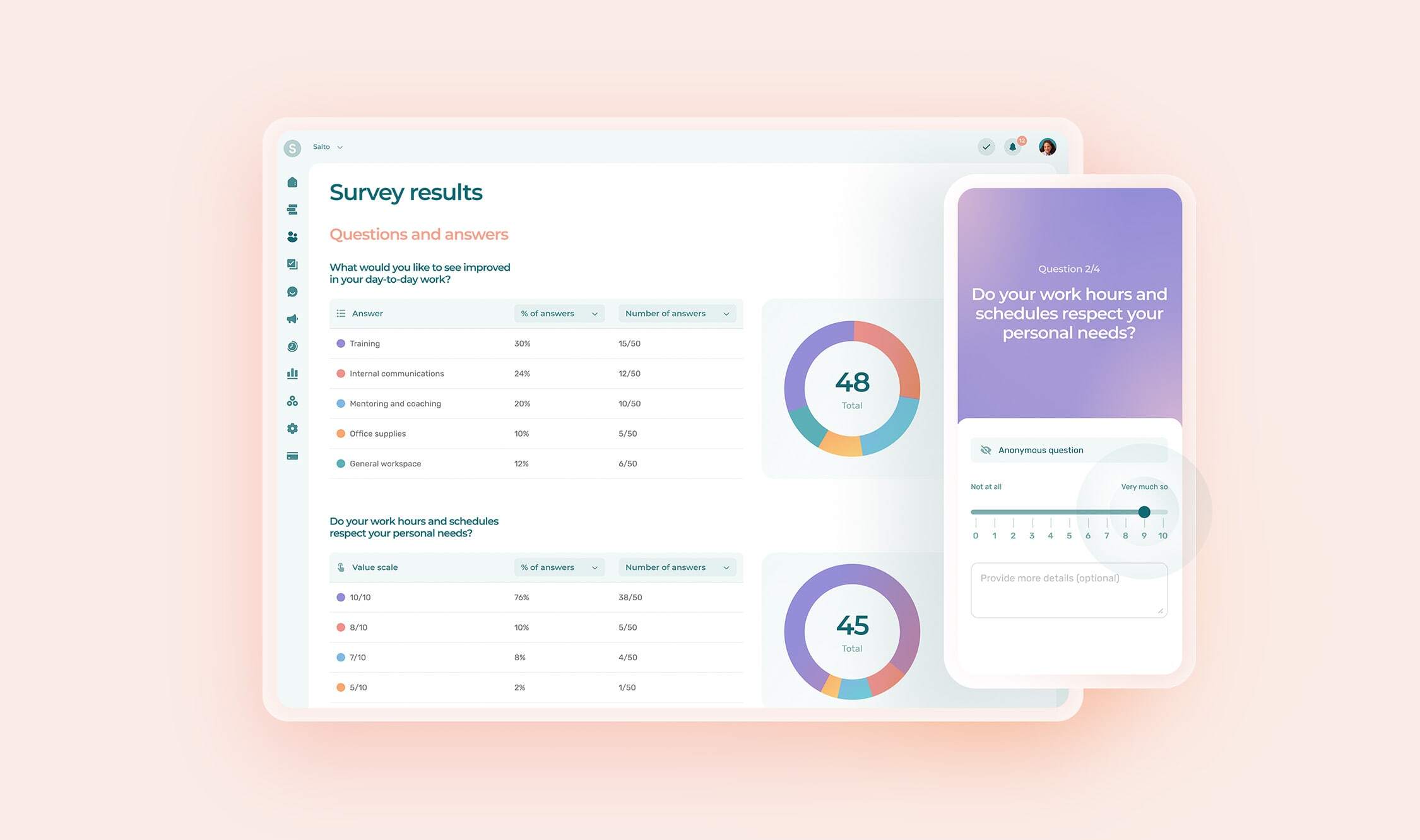Job satisfaction is a concern for many managers, given that it significantly impacts employee loyalty and retention. But what’s the point of addressing job satisfaction if we don’t measure it?
An employee who reports being satisfied at work is in fact saying that their job meets their expectations. Everyone’s expectations differ according to personality, values, personal context, and professional ambitions. So how do you make sure that your team is satisfied, if there is no universal recipe?
The only way is to measure your employees’ satisfaction on a regular basis and be ready to adapt your practices according to the answers you receive.
To this end, I’m going to tell you about the ultimate tool for measuring job satisfaction, and explain how to get the most out of it.
What Is Job Satisfaction (Or Employee Satisfaction)?
Job satisfaction, or employee satisfaction, is the match between what a person wants and what they get from their job.
Different aspects will influence the feeling of satisfaction from person to person. It is a multidimensional and subjective concept.
Key factors that influence job satisfaction include:
- Appreciation of tasks and workload
- Job security and compensation
- Work-life balance
- Peer relationships
- Having exciting goals and challenges
- Personal development
- The work environment
Why Measure Job Satisfaction?
Employee satisfaction has a substantial impact on staff retention, motivation, work atmosphere and team performance.
Satisfied employees and a positive work environment also add to the company’s image and employer brand. They can enable an organization to quickly improve its attractiveness to job seekers, in addition to facilitating hiring and retention for your team.
Measuring your team’s job satisfaction helps you improve and maintain it over time. You can also get an idea of issues and irritants so you can address them.
💡 Of course, proactivity is always key; measuring job satisfaction or dissatisfaction can be completely counterproductive if no action is taken based on results. For employees, it can be even more irritating to see that their opinion is not being considered.
How Do I Measure Job Satisfaction?
There are many methods you can use to evaluate your employees’ level of satisfaction or dissatisfaction. For example, during your one-on-ones, always include some time to ask your employees if they want to share any issues they might have regarding their manager, team, tasks etc.
However, there are limits to this kind of feedback collected by the manager. Employees will tend to shy away from expressing criticism of their supervisor to face-to-face.
This is why it makes sense to explore other avenues to complement (and not replace) this strategy.
Employee Satisfaction Studies and Surveys: Is There a Difference?
There are several ways to measure job satisfaction that are confidential and can touch multiple topics. The best known is an anonymous study or survey.
The main difference between the two lies in their depth and breadth.
👉 A study lets you collect more in-depth information but requires more time and analysis.
👉 A survey usually only includes a few questions, and is very quick to fill out. The emphasis is on questions with quantifiable answers.
This post will focus on anonymous satisfaction surveys.
The Anonymous Satisfaction Survey: A Powerful Tool for Collecting Real Feedback
A job satisfaction survey can become a real tool for employee retention. When used properly, it is your most valuable strategy for assessing your employees’ satisfaction and well-being, as well as their loyalty, and so on.
💡 What makes the anonymous satisfaction survey so powerful is that it is short to complete and provides a clear picture. It also yields honest feedback given its anonymity, and you can send out surveys on a regular basis (e.g., monthly), either by duplicating and re-administering a past survey or creating a new one.
1. Choose the Survey Topic
For starters, choose what you want to measure. To do so, simply ask yourself what your goal is with this survey. For example, if your goal is to find out if your employees enjoy their work environment, you’re going to ask questions about the workplace, relationships, atmosphere, etc.
There are many topics you can explore, including retention, well-being at work, relationships with peers, and satisfaction with employee recognition.
Once you’ve settled on a topic, determine which questions you want to ask.
Know that there are many software programs that can support you in creating and sending out surveys. The Agendrix Survey module is one example. If you prefer not to use such software, you can also check out our article: 56 questions for collecting feedback as a manager.
2. Send the Survey to Your Team
Once your job satisfaction survey is complete, it’s time to send it to your team. If you don’t have dedicated software that can automate everything, you can use solutions such as Google Forms or SurveyMonkey.
💡 Always make sure not to ask for any information that could identify members of your team like their name or email, which would compromise their anonymity.
3. Respond to Employee Feedback
It’s important to place value on the feedback you get from people who work with you.
When one of your team members goes to the trouble of diligently and honestly answering a survey, it is critical for you to thank them and show your appreciation. These answers are nothing short of a gold mine for a manager.
💡 You can send an email thanking your employees for their time, or even thank everyone verbally during a team meeting.
4. Interpret the Results
Once the results are in, evaluate what stands out, and ask yourself what you could do better in the areas that were flagged as problems.
To avoid having to send out lots of surveys, include additional open-ended (long-form) questions worded to ask for more detail. For example:
1. Are you satisfied with your work environment?
If you answered no, what improvements could we make to the work environment?
or even
2. Do you feel your schedule offers you enough flexibility?
If not, how can we improve the situation?
💡 Keep a careful record of the results and your interpretations. This valuable information will allow you to look back on improvements. And also, to share future surveys on the same topics after you make improvements.
After all, what better way to find out if your efforts have hit the mark than to ask the people directly concerned?
5. Take Action on Identified Issues
Last but not least, take action on the issues identified in the employee satisfaction survey answers. If you don’t know where to start, here’s a list of articles with down-to-earth tips to help address various aspects that influence job satisfaction.
💡 Plan to survey your team again on the same aspects in a few weeks/months.
A Few Articles to Help You Take Action
- 6 Keys to Successful One-on-One Meetings
- 31 Concrete Actions for the Ideal Work Environment
- 22 Examples of Employee Appreciation Messages
- 52 Tips to Improve Well-Being at Work
- The Labor Shortage: Flexible Hours to the Rescue
- 8 Tips to Boost Your Employee Retention
- 5 Ways to Boost Job Satisfaction
- Make Happiness at Work a Priority













